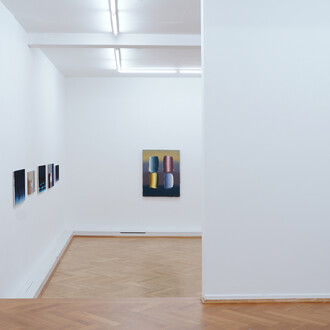The purchase of the paintings in 1949 of “Tightrope Walkers” and “Turkish Café” by August Macke constituted the beginning of professional and programmatic collecting at the Kunstmuseum Bonn. At the same time, these works laid the groundwork for a particular emphasis of the Museum that still applies today. In the ensuing years, one of the most extensive collections of Macke’s works was to be assembled, with paintings from all periods of his creative life, including a large number of watercolors and drawings.
August Macke, born in Meschede in 1887, grew up in Bonn and spent most of his life here. Macke was in no way merely a regional artist, however, but was in on the most important cultural and political activities of his time. During his development as an artist, he grappled with the various tendencies of his time, the art of Henri Matisse and later, Robert Delaunay, being of particular significance to him.
Macke’s contemporaries already recognized color as the central quality of Macke’s pictures, which the artist developed as a sovereign means of creation and expression. His friend Franz Marc wrote in 1914, after Macke’s early death at the beginning of World War I: “We painters are well aware that because his harmonies are no longer, all color in German art will pale by several shades and take on a blunter, dryer tone. Above all he gave us the color of the brightest and clearest hues, so clear and bright as his whole being was”. A deep belief in the order of the world speaks from Macke’s paintings. This order came directly from what was visible, the sensual experience of the world. A “Song of the Beauty of Things” was how Macke referred to his art, which was supposed to create parables for the harmony and unity of life.















